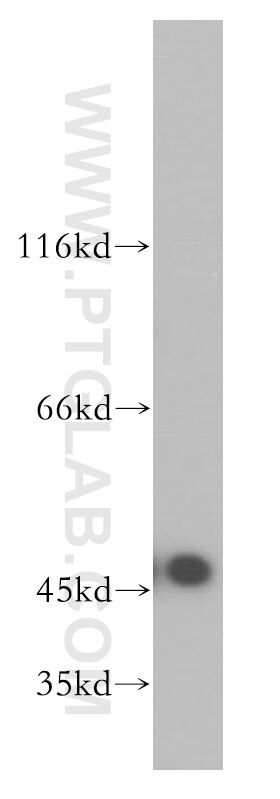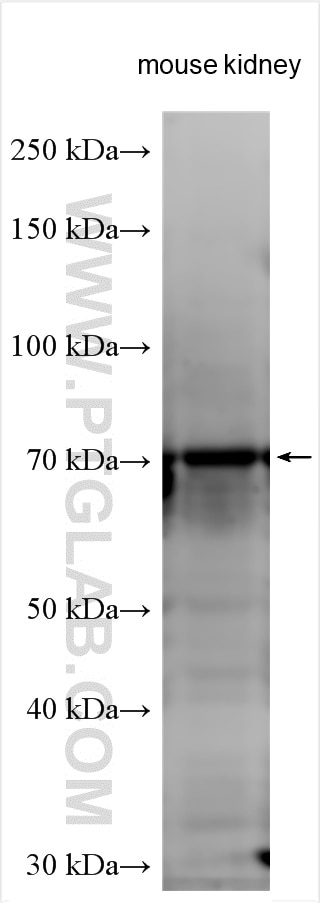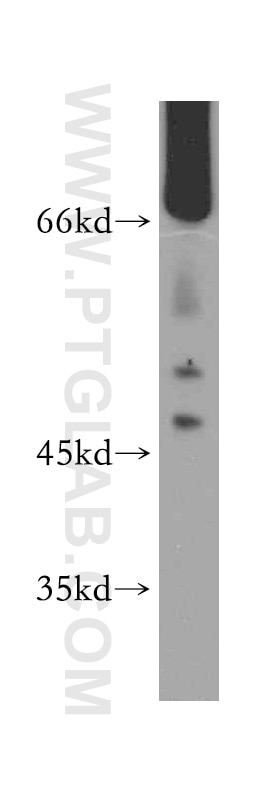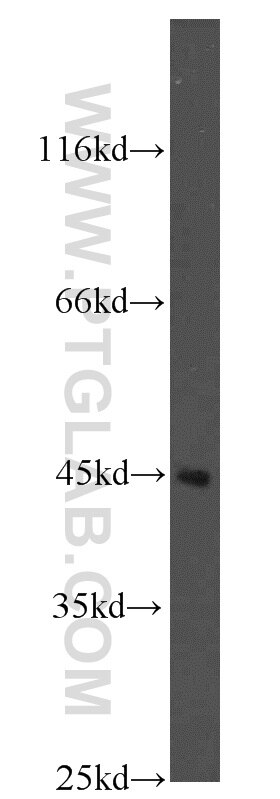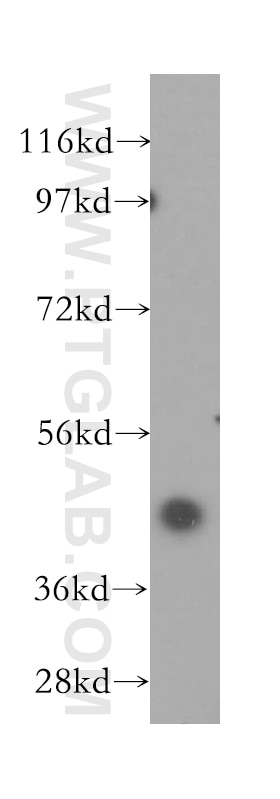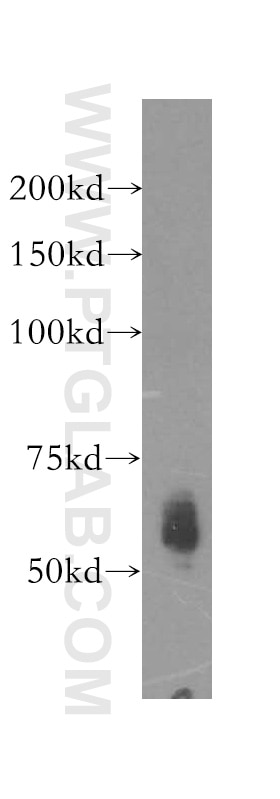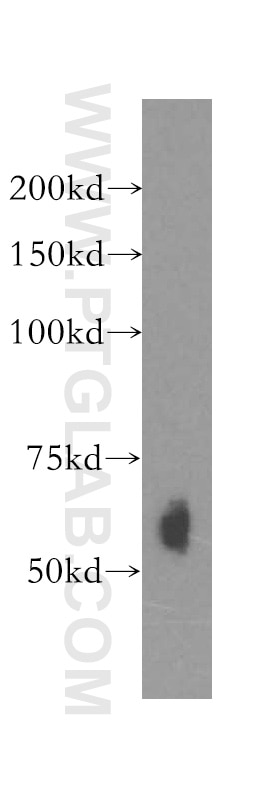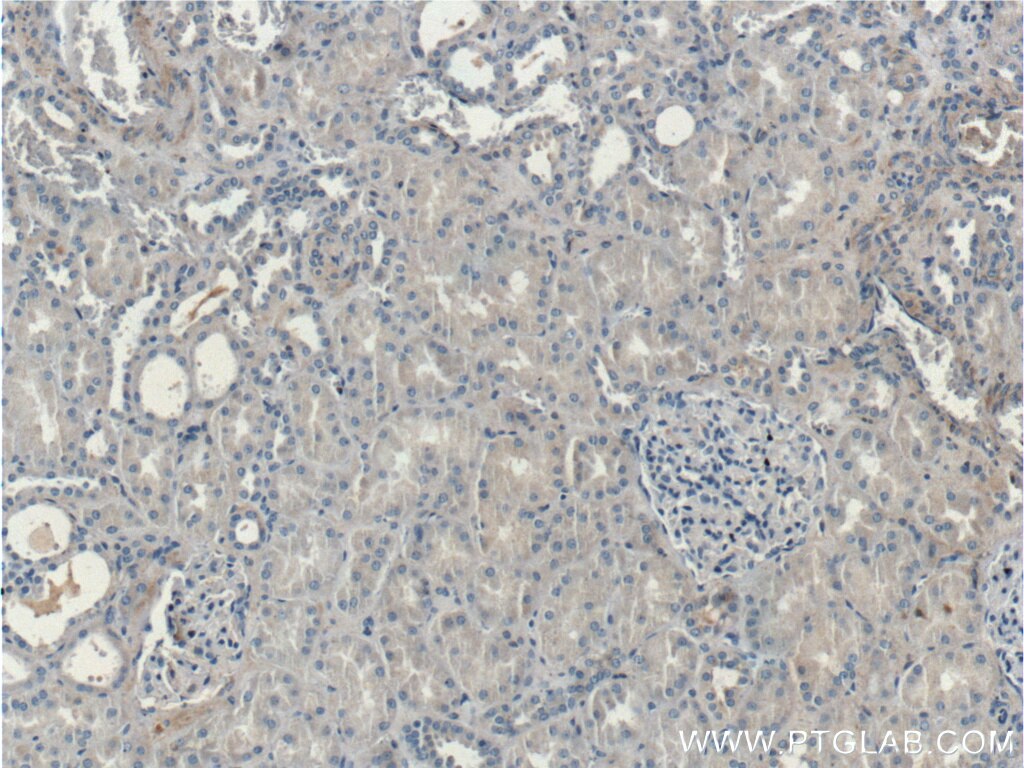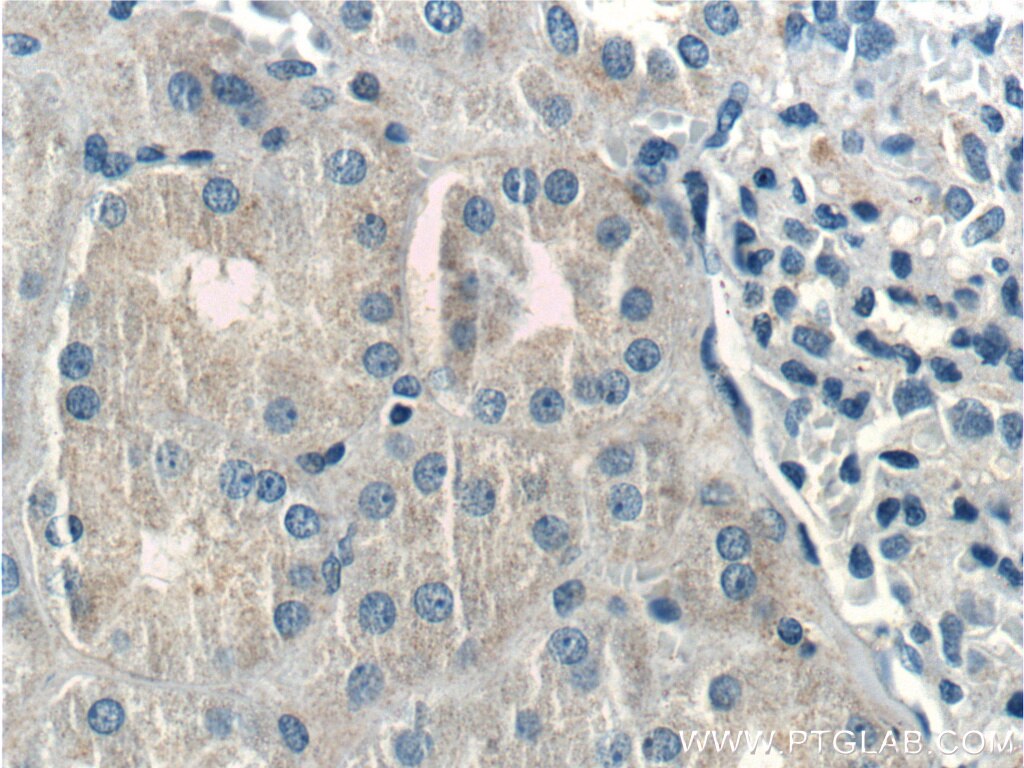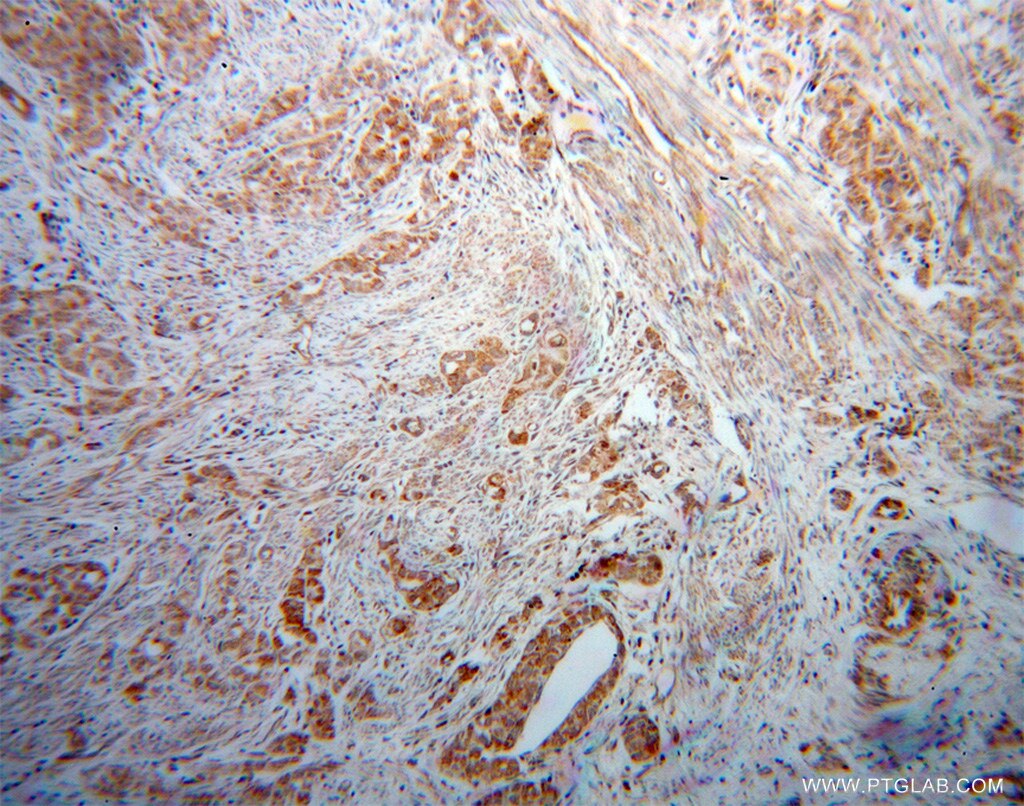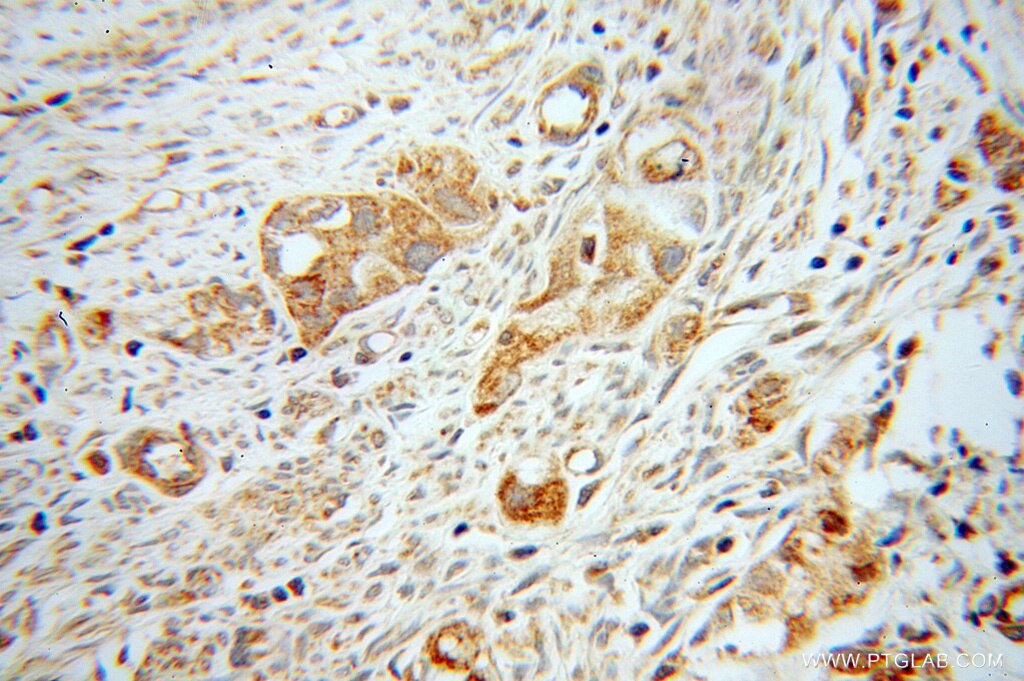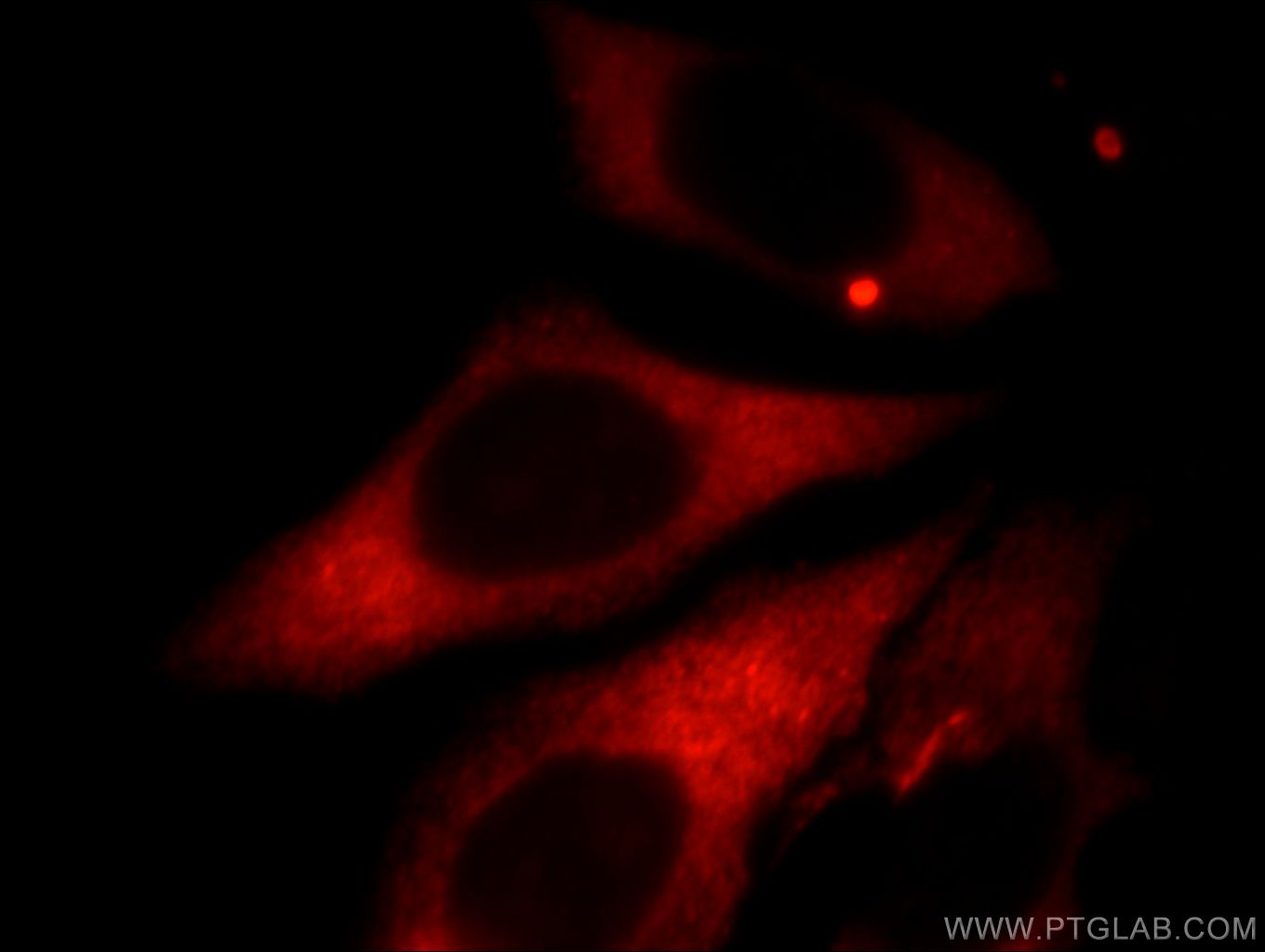Kininogen 1 Polyklonaler Antikörper
Kininogen 1 Polyklonal Antikörper für WB, IHC, IF/ICC, ELISA
Wirt / Isotyp
Kaninchen / IgG
Getestete Reaktivität
human und mehr (2)
Anwendung
WB, IHC, IF/ICC, CoIP, ELISA
Konjugation
Unkonjugiert
Kat-Nr. : 11926-1-AP
Synonyme
Geprüfte Anwendungen
| Erfolgreiche Detektion in WB | HeLa-Zellen, A2780-Zellen, COLO 320-Zellen, MCF-7-Zellen, Mausnierengewebe |
| Erfolgreiche Detektion in IHC | humanes Nierengewebe, humanes Endometriumkarzinomgewebe Hinweis: Antigendemaskierung mit TE-Puffer pH 9,0 empfohlen. (*) Wahlweise kann die Antigendemaskierung auch mit Citratpuffer pH 6,0 erfolgen. |
| Erfolgreiche Detektion in IF/ICC | HepG2-Zellen |
Empfohlene Verdünnung
| Anwendung | Verdünnung |
|---|---|
| Western Blot (WB) | WB : 1:500-1:1000 |
| Immunhistochemie (IHC) | IHC : 1:50-1:500 |
| Immunfluoreszenz (IF)/ICC | IF/ICC : 1:10-1:100 |
| It is recommended that this reagent should be titrated in each testing system to obtain optimal results. | |
| Sample-dependent, check data in validation data gallery | |
Veröffentlichte Anwendungen
| WB | See 7 publications below |
| IF | See 2 publications below |
| CoIP | See 1 publications below |
Produktinformation
11926-1-AP bindet in WB, IHC, IF/ICC, CoIP, ELISA Kininogen 1 und zeigt Reaktivität mit human
| Getestete Reaktivität | human |
| In Publikationen genannte Reaktivität | human, Maus, Ratte |
| Wirt / Isotyp | Kaninchen / IgG |
| Klonalität | Polyklonal |
| Typ | Antikörper |
| Immunogen | Kininogen 1 fusion protein Ag2574 |
| Vollständiger Name | kininogen 1 |
| Berechnetes Molekulargewicht | 644 aa, 72 kDa |
| Beobachtetes Molekulargewicht | 48 kDa, 72 kDa |
| GenBank-Zugangsnummer | BC060039 |
| Gene symbol | Kininogen 1 |
| Gene ID (NCBI) | 3827 |
| Konjugation | Unkonjugiert |
| Form | Liquid |
| Reinigungsmethode | Antigen-Affinitätsreinigung |
| Lagerungspuffer | PBS with 0.02% sodium azide and 50% glycerol |
| Lagerungsbedingungen | Bei -20°C lagern. Nach dem Versand ein Jahr lang stabil Aliquotieren ist bei -20oC Lagerung nicht notwendig. 20ul Größen enthalten 0,1% BSA. |
Hintergrundinformationen
Kininogens are inhibitors of thiol proteases. Kininogen 1 plays important role in Kinin-kallikrein system. This KNG1 gene contains 10 exons and encodes two proteins through alternative splicing: high molecular weight kininogen (HMWK) (72kDa) and low molecular weight kininogen (LMWK) (48kDa) (PMID: 37442062). HMWK is produced by the liver together with prekallikrein. It acts mainly as a cofactor on coagulation and inflammation, and has no intrinsic catalytic activity. LMWK is produced locally by numerous tissues, and secreted together with tissue kallikrein. 11926-1-AP was generated against N-terminal 300 aa of HMW kininogen. It can bind both HMW and LMW kiniogen.
Protokolle
| PRODUKTSPEZIFISCHE PROTOKOLLE | |
|---|---|
| WB protocol for Kininogen 1 antibody 11926-1-AP | Protokoll herunterladen |
| IHC protocol for Kininogen 1 antibody 11926-1-AP | Protokoll herunterladenl |
| IF protocol for Kininogen 1 antibody 11926-1-AP | Protokoll herunterladen |
| STANDARD-PROTOKOLLE | |
|---|---|
| Klicken Sie hier, um unsere Standardprotokolle anzuzeigen |
Publikationen
| Species | Application | Title |
|---|---|---|
EBioMedicine An HBV susceptibility variant of KNG1 modulates the therapeutic effects of interferons α and λ1 in HBV infection by promoting MAVS lysosomal degradation | ||
Cell Physiol Biochem Novel Serum Biomarkers Detected by Protein Array in Polycystic Ovary Syndrome with Low Progesterone Level. | ||
PLoS One Proteomic analysis of rat serum revealed the effects of chronic sleep deprivation on metabolic, cardiovascular and nervous system. | ||
Biol Pharm Bull Proteomic analysis reveals the renoprotective effect of Tribulus terrestris against obesity-related glomerulopathy in rats. | ||
Med Sci Monit Isobaric Tagging for Relative and Absolute Protein Quantification (iTRAQ)-Based Quantitative Proteomics Analysis of Differentially Expressed Proteins 1 Week After Spinal Cord Injury in a Rat Model. | ||
JID Innov Kininogen-Nitric Oxide Signaling at Nearby Nonexcited Acupoints after Long-Term Stimulation. |
